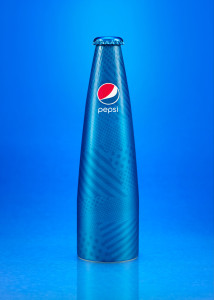In a recent piece for The Huffington Post Australia, author Luke Cooper asked the question, “Why would a soft drink company require a chief design officer?” The answer lies in how brands present themselves to their consumers.
As the wishes of consumers shift, brands must also shift how their strategies are developed and how they represent themselves. This trend goes beyond brand strategy; in fact, it leans heavily on visual branding to communicate the brand story.
“Design isn’t about the shape of a product, but the way of thinking of the company,” Mauro Porcini, Pepsi’s new Chief Design Officer, points out.
Porcini’s appointment to his role at Pepsi is the latest move by a global brand acknowledging that their brand’s success is no longer a byproduct of tangible brand elements like logo, product  quality and packaging. Rather, brands are moving into the business of emotion and connection with their consumers, utilizing branding to insert themselves in new aspects of their lives.
quality and packaging. Rather, brands are moving into the business of emotion and connection with their consumers, utilizing branding to insert themselves in new aspects of their lives.
The new wave of product design is heavily influenced by technology and the consumer’s want for brands to make their lives easier and more interesting. Pepsi’s new bottle designs, which took four years to complete, merges the iconic Pepsi branding with space-age bottle shapes and materials, all intended to create the emotional connection that Pepsi is a brand of the future.
It’s quite a risk for these long-lasting brands, which have spent decades building up their brand equity through familiarity and consistency, to essentially rebrand their visual branding elements in the name of the next big thing. But they see, and have seen for a while, that today’s consumer base is skewing younger and showing strong signs of favoring brands with more flash and modern looks.
With this change in brand strategy comes a word that has been the driving force behind many of the rebrands, brand refreshes, updates and strategy shifts throughout the years – relevance. Brands are consistently fighting to stay relevant with their target audience, and the recent tech-influenced design choices are perfect examples.
There is a fine line, however, when looking to stay relevant. Yes, there are some brands who can easily and seamlessly evolve and change their branding, keeping their brand equity in tact while staying top-of-mind with consumers. However, this is a rarity in the branding world, and a characteristic that does not come easy.
For the rest of the brands, a pair of strategies are available as possible solutions.
The first starts at the beginning of the branding process with a strategy that at first seems counter-intuitive – in order to avoid the need to constantly shift to keep up with the latest trends, develop a brand that ignores the need to feel “trendy.” In other words, if you start out with a brand strategy that is rooted in strong and well-established branding principles, then when the current trend goes out of fashion, your brand won’t go with it.
The second strategy takes a page from the book of those timeless brands who seem to stay relevant no matter what the trends. Their secret weapon is an unwavering commitment to what has made their brand strong. Whether it’s a logo, a name, a color or even just a consistently quality product, they have identified the constant among the change and used that as the calling card for their brand evolutions.
With the shift in brand presentations that have led to the hiring of a chief designer at a soda company, brands are looking more toward creating an image outside of their product – one that will stay with their consumer long after the interaction has ended, or one that will draw them in to begin with. But as has been seen throughout the history of failed rebrands, change for change sake is a recipe for disaster – brand strategy and strong visual brand guidance are crucial for keeping up with the latest and greatest.
Learn more about building your best brand by downloading this FREE webinar, “Identifying The Opportunities In Your Brand Portfolio – Are You Capitalizing On Every Potential Business Opportunity Your Portfolio Provides?”
